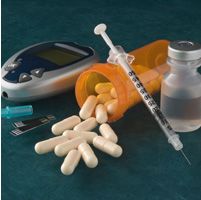Article
High Intensity Exercise Recommended For Type 1 Diabetes Patients
Author(s):
Many trainers recommend intermittent high-intensity exercise (IHE) – bouts of periodic supramaximal effort during low-to-moderate intensity activity for the general population.

Many trainers recommend intermittent high-intensity exercise (IHE) — bouts of periodic supramaximal effort during low-to-moderate intensity activity for the general population. Research has shown benefits on exercise performance and cardiovascular and metabolic parameters.
Few studies have examined IHE in type 1 diabetes (T1DM), but many studies report that continuous moderate intensity exercise (CONT) usually leads to stable glucose levels.
People who have T1DM need regular exercise, but exercise can create high insulin demand. Adjusting insulin and diet to prevent hypoglycemia can be a juggling act, and some patients disregard healthcare providers' recommendation regarding insulin completely. Understanding how exercise affects people with T1DM could help endocrinologists improve their recommendations.
A study published in Diabetologia reports that exercise of varying intensity under conditions patients with T1DM experience daily: euglycemia maintained by oral glucose and no specific pre-exercise insulin adaptation.
This study recruited 12 recreationally active male adults with T1DM, all in their 20s. All were well controlled with either multiple daily insulin injections or continuous subcutaneous insulin, and none had complications.
The study design was prospective, randomized, open-label, and crossover.
Participants engaged in 90 minutes of iso-energetic cycling at 50% maximal oxygen consumption, during which the investigators examined periods of CONT and IHE. Participants exercised several times under observation over the course of several weeks.
Participant's glucose and insulin levels were comparable between interventions. Exogenous glucose requirements during the last 30-minute of exercise were 50% lower than expected in IHE.
During periods of IHE, participants needed less exogenous carbohydrate to maintain euglycemia than they did during CONT. Although participants did not have increased hepatic glucose output, they did have a significantly lower glucose disposal during IHE. The investigators identified increased levels of growth hormones, catecholamines, and lactate during IHE.
The investigators indicate that in individuals with T1DM without insulin adaptation, IHE reduced exogenous glucose requirements type 1 diabetes compared with CONT. Glucose uptake decreased in these study participants, which implied a shift towards consumption of alternative substrates. The investigators suggest this is a specific benefit in T1DM.




